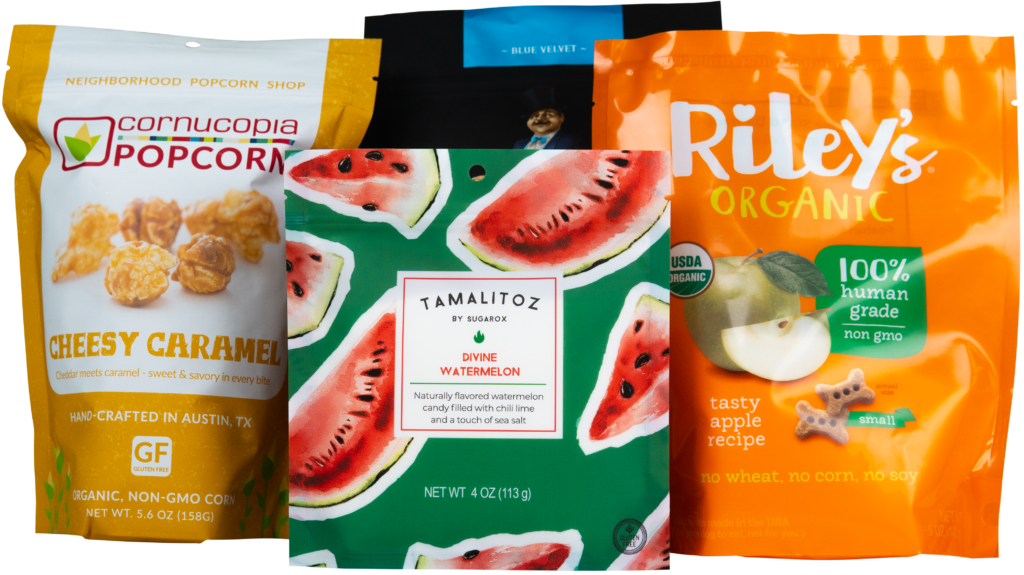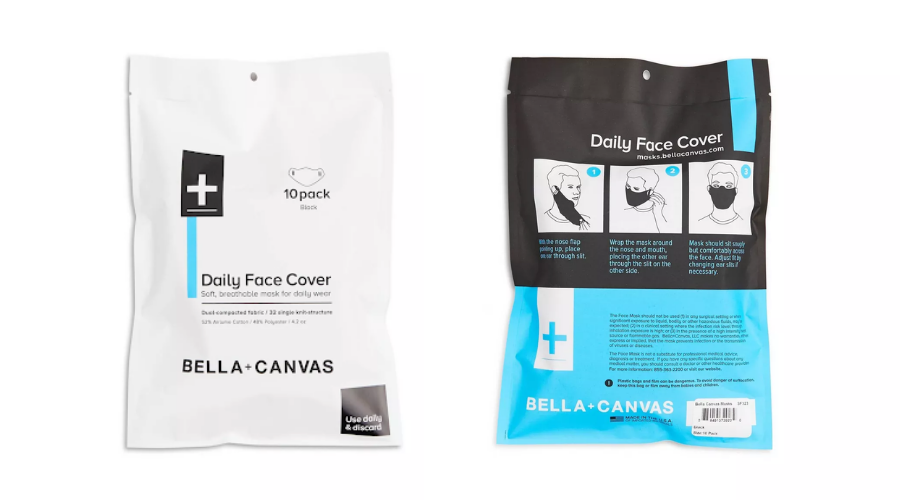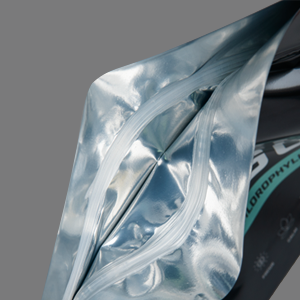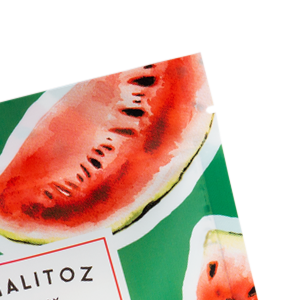There’s a whole world to choose from when deciding on the perfect pouch for your brand. When deciding what you want in a pouch, it can be helpful to start by knowing exactly what options are available. Your packaging is arguably just as important as your product, and you want to make sure that you are getting exactly what your product needs to protect your product while promoting your brand.
What exactly goes into the construction of a great pouch and how can you be sure you’re choosing the best options? Read on to learn about the pouch anatomy and what will work best for your product.
Flexible Pouch Design
Let’s start by looking at the different flexible packaging pouches you can choose from.
Stand Up Pouches
One of the most well known and popular types of flexible pouches is the stand-up pouch. This pouch is fully formed with a bottom designed to allow the pouch to “stand up” on the shelf. You can find a variety of different products packaged in stand up pouches, including snacks like chips, nuts and granola, as well as frozen foods and jerky.

Different variations of the stand up pouch include:
- Gusseted Pouches
- Side gusseted pouches
- Bottom gusseted pouches
- Doyen Pouch (also known as Round Bottom or Doypack)
- K-Seal Pouch
- Plough Bottom Pouch (also referred to as Corner Bottom, plow Bottom or Folded Bottom)
- Flat Bottom Pouch
- Retort Pouch
- Shaped Pouch
Lay Flat Pouches
Another style is the lay flat pouch, or pillow pouch, which is a fully formed pouch that is designed to lay flat.

The main types of lay flat pouches include:
- Pillow Pouches
- 3-Side Seal Pouches
- Stick Pack Pouches
With stand up and lay flat pouches, the fully formed pouches are created and then shipped to brands for filling and sealing. Rollstock, on the other hand, is engineered film that is sent to brands where they (or their co-packer) would then place it on a form-fill-seal packaging machine to form the pouch.
Pouch Seals
Next, let’s move to the seal, or the closure of the pouch. All pouches are sealed to keep the package closed and secure. While there are many different reclose options available, a reclose zipper is not always necessary, especially if the pouch is not meant to be consumed over multiple uses. In that case, the top of the pouch can be either cold or heat sealed to deliver a secure seal for shipping and storage. If a reclose seal is needed for your pouch, there are several options to suit any project:
Zipper
A press-to-close zipper is a great choice due to its popularity with consumers. Zippers render the package resealable, and work great for many types of pouches, including both stand up and lay flat styles. Zippers help to preserve the freshness of the product inside, offer consumer convenience, and prevent spills.

Powder-Proof Zipper
This type of zipper further aids in consumer convenience, and includes a special feature that helps to keep loose products like flour, sugar, and other powders away from the zipper area, and back into the bag. It ensures that consumers can open and close the package easily multiple times, without the powder clogging up the zipper track.
Child-Resistant Zipper
An effective child-resistant zipper makes the package difficult for children under five to open, yet easy enough for adults. They are used in many different markets like pharmaceuticals, supplements, herbal medicines, and household cleaners. A properly certified child-resistant closure is the safest and most functional way to ensure that a reclosable, flexible package meets the requirements for special packaging as stated in the U.S. Poison Prevention Packaging Act.
Flexible Pouch Bottom Styles
Let’s move to the bottom, or base, of the flexible pouch. There are a variety of different bottom gusset styles for stand-up pouches, including:
Doyen Seal
Doyen is a common bottom gusset style in which the u-shaped seal reinforces a large area of the pouch by sealing the front and back panels to the bottom gusset. It enables light weight products to stand up since the bottom seal acts as “feet” for the pouch.
K-Seal
A K-Seal is characterized by a K-style seal at the corners, and a flat bottom seal across the bottom edges of the pouch.
Corner/Plough (Plow) Bottom Style
This style of bottom is typically recommended for heavy items. There is no seal on the bottom of the pouch, only along the corners of the bottom, thus the product sits directly on the bottom of the pouch.
Skirt Seal
Lastly, the skirt seal refers to a bottom gusset seal that appears “skirted.” Skirt refers to the portion of a bag between the bottom seal and the bottom edge of the bag.
Here is a visual representation of the different flexible pouch bottom styles:

Barriers + Finishes for Flexible Pouches
The protective barrier of the pouch, or the barrier, preserves and protects the contents of the package to maintain freshness, extend shelf life, and prevent damage to the contents. Flexible barrier packaging is generally made from laminated layers or multiple layers of barrier films. Depending on the product you are packaging, your barrier needs will vary. A specific combination of flexible plastics, aluminum, paper, and coating is chosen to create the right barrier protection for the application. There are a variety of different barrier options for moisture, oxygen, and scent protection, blocking these from entering or exiting the package.
In addition to the pouch barrier, brands can also customize their pouches with finishes. The finish of a pouch are what impact the look and feel of the pouch. Popular finishes include glossy, matte, metalized and soft-touch matte.
Pouch Options / Add Ons
The final part in our pouch anatomy includes the optional add-ons for a pouch. Let’s dive into the most common options for pouches.
Hang Holes
Adding a hang hole to your pouch allows for easy retailing. It enables the pouch to hang on a wall or display, for maximum visibility, instead of placing it on the shelf, an important consideration specifically for lay-flat pouches. Hang holes are commonly used on small bags and grab & go bags sold at the point of sale, or in convenience stores. Brands can choose a traditional round hole or a sombrero hole, depending on the needs of the project.
Tear Notches
Tear notches are small indentations in the film that sit directly below the heat/cold seal area. They aid in consumer convenience because they help users open the package more easily. The notches signal to consumers where to start the tear and then allows them to easily rip the top of the pouch without much force or the use of scissors.

Windows
Most flexible packaging applications can be equipped with a transparent or cloudy window, which is a great way to allow consumers to see the contents inside. Windows are gaining in popularity as more brands place emphasis on transparency. Windows can be clouded or clear, based on the type of film chosen for the project.
Partnering With a Trusted Flexible Packaging Provider
As you can see, flexible packaging consists of many parts, layers, features, and add-ons that are customizable for a variety of products. There are many considerations for creating flexible packaging, and our team of flexible packaging experts is here to work with you to create the best flexible retail packaging for your specific project
Have questions? Give us a call or request a free quote and we will help you get started with our digital pouch printing and flexible packaging solutions.
